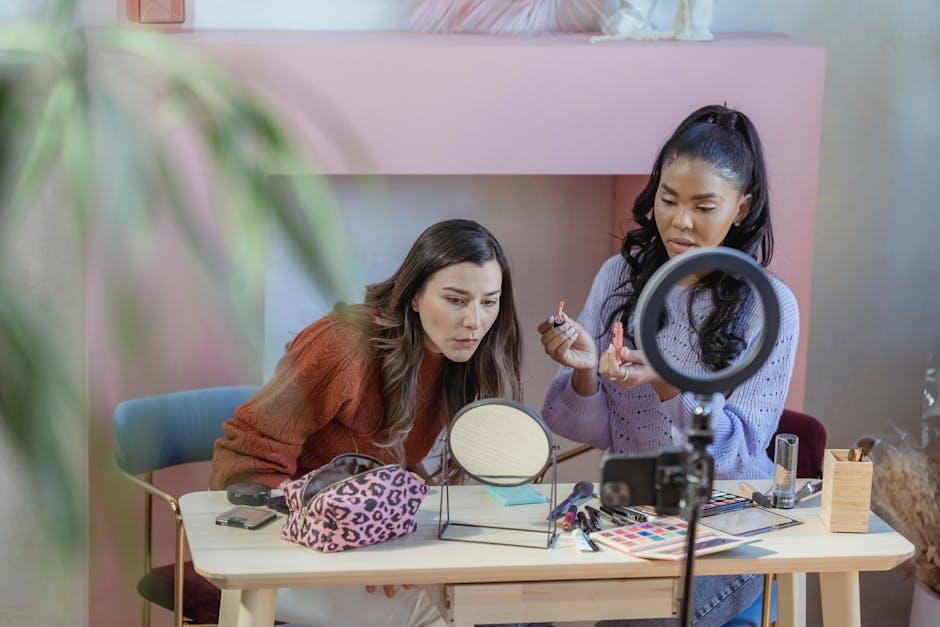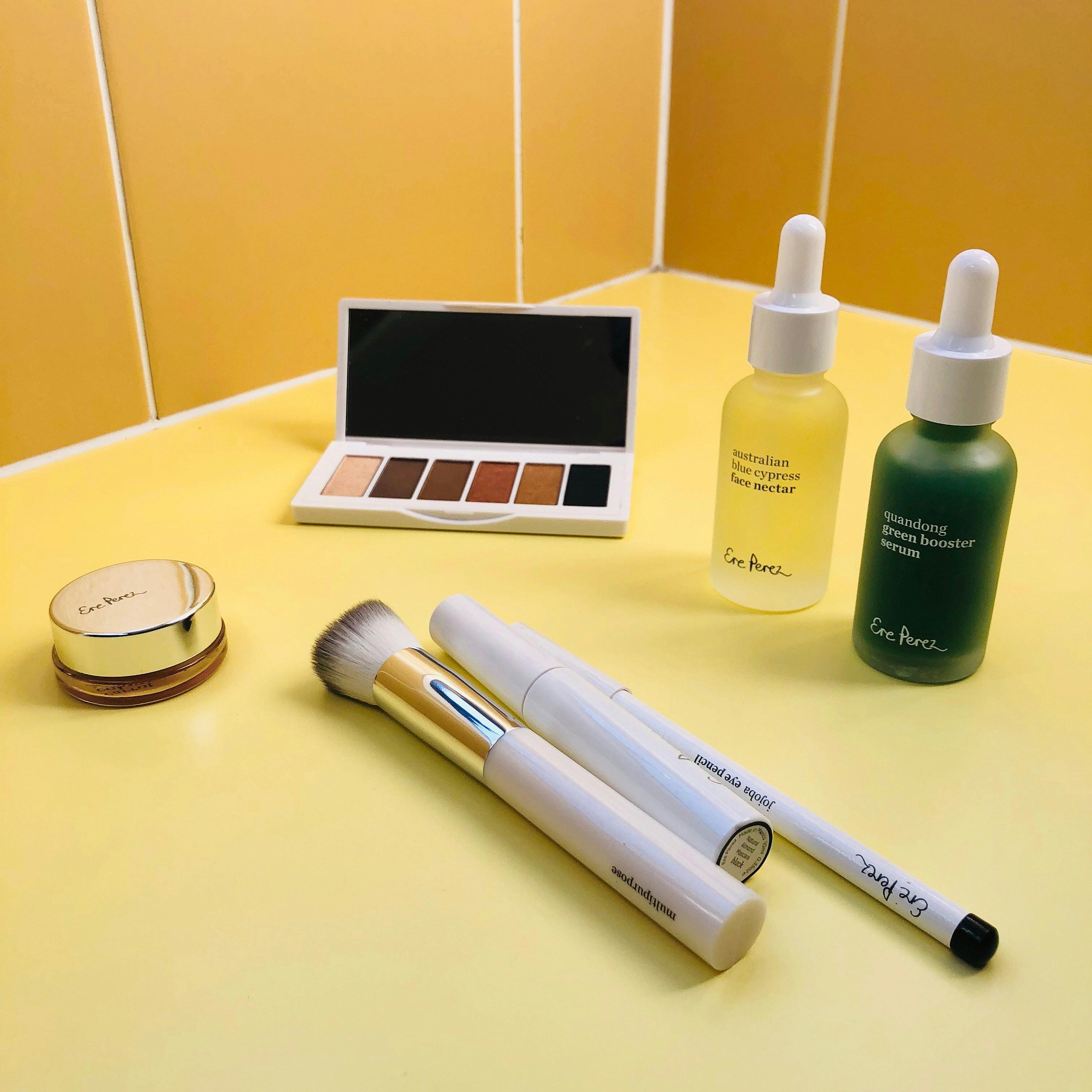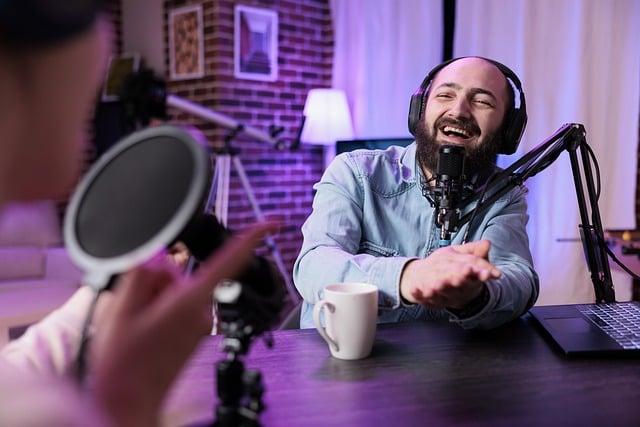The Impact of Beauty Influencers on Teenagers’ Self-Esteem
In a world where the glow of a smartphone screen often serves as a teenager’s mirror, the influence of beauty gurus and makeup mavens has surged to unprecedented heights. These digital doyennes, with their meticulously curated feeds and transformative tutorials, wield brushes like magic wands, capable of conjuring confidence or casting shadows of doubt. As they redefine standards of beauty with each contour and highlight, a pressing question emerges: how do these virtual visages impact the self-esteem of their young, impressionable audience? This article delves into the complex interplay between beauty influencers and the teenage psyche, exploring both the empowerment and the insecurities that blossom in the wake of perfectly filtered perfection.
Shaping Perceptions The Powerful Influence of Beauty Gurus
Beauty influencers wield an immense power over the perceptions of their audience, especially teenagers, who are often in the process of discovering their personal identity. These digital mavens craft visual narratives that can subtly shift societal beauty standards, making them gatekeepers of what’s deemed attractive or desirable. Through their curated content, they offer a blend of aspirational and relatable elements, drawing teenagers into a world where beauty is both an art and a science. With every makeup tutorial and skincare regimen shared, they set trends that ripple through social media feeds and beyond.
While some teenagers find empowerment and confidence in mastering new beauty techniques, others may experience a heightened sense of inadequacy. This dichotomy is fueled by the often unrealistic portrayals of perfection that flood platforms like Instagram and YouTube. Influencers may unintentionally reinforce the idea that beauty equates to worth, leading to a cycle of comparison and self-doubt. It’s crucial for teenagers to develop a critical eye, recognizing that behind every flawless look lies a combination of filters, lighting, and editing. Parents and educators can play a pivotal role in guiding young minds by fostering discussions around the following:
- The difference between reality and curated content
- The importance of self-worth beyond physical appearance
- Understanding the commercial aspect of influencer content

Unfiltered Reality Navigating the Perfect Illusion of Social Media
In today’s digital landscape, the pervasive influence of beauty influencers has woven a complex tapestry that intricately affects teenagers’ self-esteem. As these influencers curate and share a seemingly perfect aesthetic, they inadvertently set a benchmark that many adolescents strive to emulate. This phenomenon, fueled by the endless scroll of flawless images and videos, often leads to a distorted self-perception among teens. With every double-tap and swipe, the line between reality and illusion blurs, making it challenging for young individuals to discern authentic beauty from digitally enhanced perfection.
- Comparison Culture: Teens frequently compare themselves to the polished images they see online, leading to feelings of inadequacy.
- Validation Seeking: The quest for likes and follows can become a measure of self-worth, overshadowing genuine self-acceptance.
- Body Image Concerns: Constant exposure to idealized body types can exacerbate body image issues and lead to unhealthy behaviors.
- Unrealistic Standards: Influencers often present an edited version of reality, promoting standards that are unattainable for most.
While beauty influencers wield the power to inspire, they also bear the responsibility to promote authenticity and diversity. Encouraging transparency and celebrating imperfections can create a more inclusive digital environment where teenagers can nurture a healthy sense of self-worth.

Empowerment or Pressure Understanding the Psychological Effects on Teens
In the vibrant world of social media, beauty influencers have carved out a space where teenagers often seek inspiration and guidance. These influencers can offer a sense of empowerment by promoting self-expression and individuality. They encourage teens to explore different aspects of their personality through makeup and fashion, helping them to feel more confident in their own skin. By showcasing a diverse range of beauty standards, influencers can break down traditional barriers and offer a broader perspective on what it means to be beautiful.
However, this influence can also morph into pressure, as the curated perfection seen online sets unrealistic standards. Teens might feel compelled to emulate these seemingly flawless appearances, leading to feelings of inadequacy when they inevitably fall short. The constant comparison can foster a cycle of self-doubt, where young individuals measure their worth against the number of likes and followers. Here are some psychological effects teens might experience:
- Anxiety: Striving to meet impossible beauty standards can lead to heightened stress and anxiety.
- Body Image Issues: Continuous exposure to edited images can distort teens’ perceptions of their own bodies.
- Low Self-Esteem: Regular comparisons with influencers may result in diminished self-worth.
Ultimately, the impact of beauty influencers on teenagers’ self-esteem is a complex interplay of positive empowerment and negative pressure, underscoring the importance of mindful consumption and critical thinking in the digital age.

Building Resilience Practical Tips for Boosting Self-Esteem
Building a strong sense of self-esteem in the age of social media can be challenging, especially for teenagers who are constantly exposed to curated images of perfection. To navigate this landscape, it’s crucial to develop practical strategies that reinforce inner confidence and resilience. Here are some tips that can help:
- Set Boundaries: Encourage teens to follow beauty influencers who promote positivity and authenticity. Unfollow accounts that trigger negative self-comparisons.
- Practice Self-Compassion: Remind teens to be kind to themselves. Everyone has flaws and makes mistakes—it’s part of being human.
- Focus on Strengths: Help teens identify their unique talents and qualities. Celebrating personal achievements can foster a healthier self-image.
- Limit Screen Time: Encourage breaks from social media to engage in activities that promote well-being, such as reading, exercising, or spending time with friends and family.
- Seek Support: Cultivate a supportive environment where teens feel comfortable discussing their feelings. This could be through family conversations, school counselors, or support groups.
By integrating these practices into daily life, teenagers can develop a more resilient mindset, empowering them to navigate the influence of beauty standards with confidence and grace.
Insights and Conclusions
As we navigate the ever-evolving landscape of social media, the role of beauty influencers in shaping the self-esteem of teenagers stands as a testament to the power of digital voices. These influencers, with their curated content and aspirational aesthetics, wield an undeniable influence, both uplifting and, at times, challenging the self-perception of young minds. While they offer a platform for creativity and self-expression, they also present a mirror reflecting societal standards that can be difficult to attain. As we close this exploration, it becomes clear that the dialogue between influencers and their audiences is a delicate dance, one that requires awareness, balance, and, above all, authenticity. As teenagers continue to scroll, swipe, and engage, let us encourage a narrative that celebrates individuality and resilience, fostering a generation that values their unique beauty amidst a sea of digital impressions.


